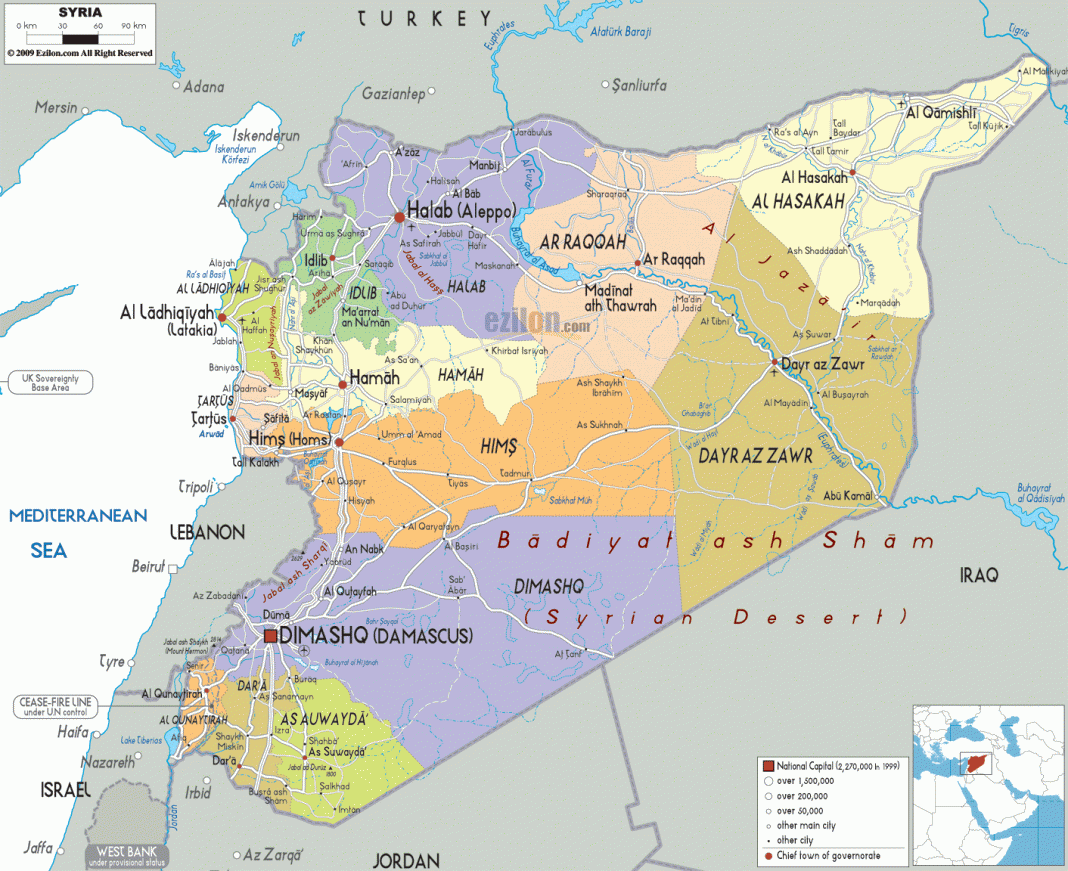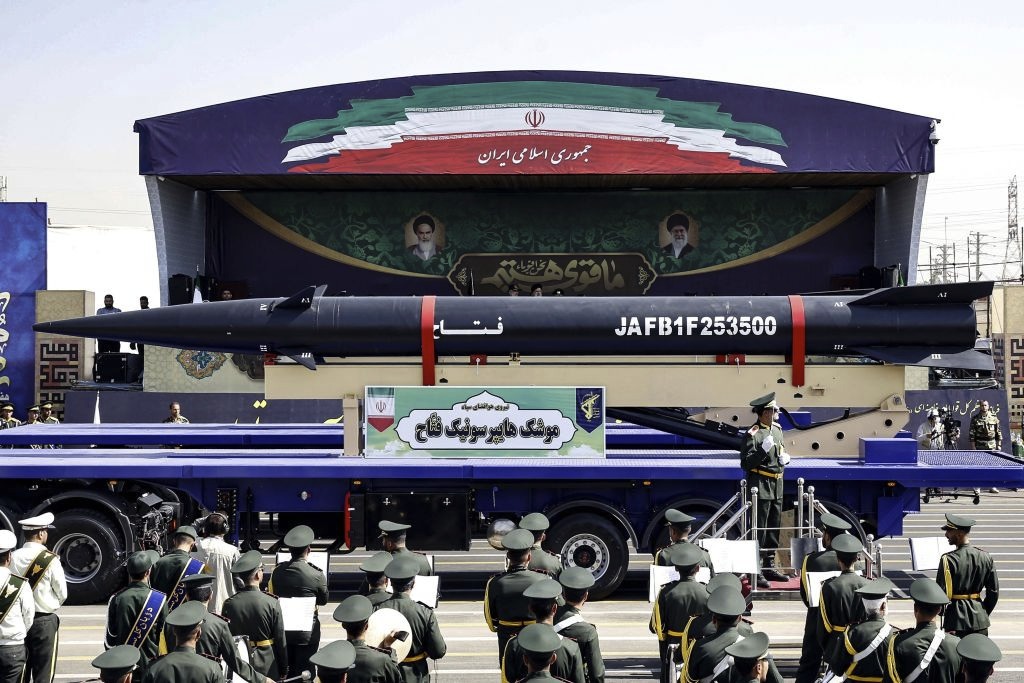The Year of the Wall: The Story of Borders in the Middle East
Samir Altaqi &Esam Aziz/MEB/Middle East Briefing/August 22/15
Late President Ronald Reagan’s timeless “Tear down the wall” is still stuck somewhere in the airwaves on its way to the Middle East. Everyone over there seems to be busy building walls on the borders somewhere. We certainly do not believe those who say that some officials own construction companies beside their official jobs. But it is indeed amazing to see the number of walls being erected on the borders of some of the region’s countries. Since the rise of the so-called political Islam, we saw the following:
* Between Egypt and Gaza: As tunnels are thought to be used to smuggle weapon to the local ISIL in north Sinai, Cairo decided in July 2014 to erect a security wall on its borders Gaza.
* Between Tunisia and Libya: A year later, and following the Sousse attack that killed 38 tourists, Tunis Prime Minister announced plans to construct a wall on his country’s borders with Libya. The decision came after discovering that the perpetrator was trained in Libya.
* Between Saudi Arabia and Yemen: Last April, Saudi companies started building a wall on the Kingdom’s borders with Yemen. The wall stretches 1100 miles and is 10 feet high. It is equipped with motion sensors and cameras.
* Between Saudi Arabia and Iraq: Riyadh decided earlier this year to build another fence on its borders with Iraq. It is “only” 600 miles long but a little more sophisticated than the Southern wall.
* Jordan started already building a “smart wall” on its borders with Syria and Iraq. The decision followed ISIL’s capture of the Iraqi and Syrian Desert. Work is still going on along the border lines with the two countries.
* Israel, which obtained an early experience through building its own separation wall with the Palestinians in the West Bank, is building a wall on its borders with Jordan. The decision, taken last June, will be implemented next year.
* Turkey decided in August 2014 to build a wall on its borders with Syria. The first portion of the wall is just south of the Turkish town of Rehaneli and is already under construction.
The construction business should be booming over there. We hope the conspiracy theorists, abundant in the Middle East, wouldn’t discover a hidden connection between the construction businesses and ISIL. And this business has more potentials to expand. Some suggestions: A wall dividing Libya into East and West. A wall dividing Syria into the West and the Rest. A wall dividing Iraq into Central and South. A wall dividing Yemen into South and North. Where else?
Times They Are A-Changing. But that much? Well, yes, that much.
Less than 60 years ago, Arabs were singing and demonstrating in the streets of most regional capitals for the “Arab Unity”. The short lived United Arab Republic was announced in 1958 making Egypt and Syria “one” country. A barrage of speeches about the “one destiny, one people and one nation” filled the airwaves. Now, however, walls are being built everywhere. Yet, while we see these walls which are made of bricks and cement, the most significant ones, however, are not seen at all. They are the walls built around each single citizen’s mind in the Arab world.
Walls, seen and unseen, are reflections of the quest of the political state for achieving maximum security. But will they really provide security? They did not in Mubarak’s Egypt. They did not in Ben Ali’s Tunisia. Neither in Saleh’s Yemen, Qaddafi’s Libya or Assad’s Syria. Security walls, bugging equipment and spying software cannot stop ideas. Ideas have this stunning quality of jumping walls, crossing borders, passing checkpoints, eluding metal detectors and making a mockery of the most sophisticated security officials and equipment. No political power can defeat ideas whatever powerful their controlled media maybe.
The central point that may improve security is to allow free social debate. Really free. Social consensus is built on free choices. We can see consensus similar to the North Korean brand where only the great and beloved leader speaks for every creature on the land. Or we can get real consensus which occurs only among free people. In Egypt, we recently saw a writer, Islam Al Behairy, specialized in Islamic studies and a devoted Muslim, banned from television under pressure from Al Azhar. Mr. Behairy’s fault was that he criticized the text based interpretation of Islam. He raised serious doubts about the Books of Hadith (utterances of the prophet). He provided compelling evidences that some of the Hadiths were written hundreds of years after the passing away of the prophet and contradict verses of the Holy Quran. He later was taken to court, accused of blasphemy, but acquitted. Yet, Mr. Behairy was lucky. In other places, critical writers receive harsher treatment. Much for a free debate.
If it is easy to sign a contract to buy bugging equipment and sophisticated security software, why then it is not as easy to just decree in one clear morning that free speech is allowed? Well, here is exactly where the current paradox is. While ideas are the first security threat to the political order, they are somehow the first line of defense as well. It depends on which kind of ideas.
Allowing any kind of ideas other than the sort distributed by street ATMs, otherwise called media or official discourse, may upset the stability and institutional balance of power in the given country. The issue, in many cases, is that of the content of the political legitimacy equation of the ruling order and its internal equilibrium.
In many cases, legitimacy is based on a self-claimed pious adherence to the word of God or on the ridiculous creed of the “good dictator”. While this may have been due to historical reasons, there was no early vision as to how the system can be moved to the sphere of true national identity. Based on the religious self-justification of some ruling elites, ISIL is challenging this raison d’etre from its own territory. ISIL is the product of dogmas that were kept sealed from real people’s critical thoughts, hence left to slide freely, unchecked by any national brakes, to radical forms. Now, the arrow of self-justification is making a U-Turn. It is ironic how legitimacy can produce its own negation. Is it then “external” threat? The Middle East is not a haven of theology. It is the utter manifestation of how real spiritual life can turn to be neither.
In other cases, legitimacy is based on an oppressive equation that trades bread for basic rights. People are forced to choose and are pushed gently, or not so gently, into the bag of the “one and only” savior of the nation. Once in, the bag is closed and the population becomes a politically dead quantum. The main allies of ISIL and all its species of radical organizations could be found in these two specific areas, namely the political legitimacy discourse of some governments which is a discourse capable of breeding a more radical version of itself, and the authoritarian suppression of freedom of speech that is followed by a legitimate backlash.
The other source, looming in the background, is the Nation-State Question which we mentioned in our last issue of MEB. Building an ISIL-proof Iraq, for one example, should not be understood in any ahistorical manner. You ask someone: if we have a country divided on sectarian bases, what should be done? Well, the answer is “form an inclusive government that represents all segments of the society”. The problem with this answer is that it is valid anytime, anywhere, in Thailand as in Burkina Faso. It looks like an eternal mathematical equation. In that sense it is isolated from place and time, hence almost always erroneous.
But for now, what is indeed urgent is to keep hammering a different understanding of the issue of security into a region that does not want even to admit the magnitude of the existential crisis it is going through.
Sorry contractors, this Wallmania in the Middle East has to stop.
Sectarian Re-Engineering of Syria’s Demography Followed by Cease-Fire
Samir Altaqi &Esam Aziz/MEB/Middle East Briefing/August 22/15
The recent intensity of attacks by Assad forces and their backers in Iran’s Revolutionary Guards and Hezbollah in Syria reveals what could be expected to follow soon. It is almost self-evident that we should expect a rise of international pressure to reach a cease fire in Syria in the next few months. It seems the trilateral alliance has been given a timeframe to secure the areas considered vital for their future strategic intentions. These forces focus relentlessly on certain areas like Ghota in general and Duma in particular, Ghab valley near Hama and Qalamoun Mountain.
These intensive attacks almost draw the map which the trilateral alliance have in mind in the near future. One can almost read this map from simply following the logic of their intensive military operations on the ground.
These recent merciless operations tell us that the trilateral alliance has indeed divided its targets into three zones. The first is made of areas that are considered, for the three parties, unnegotiable due to their strategic importance. The second is areas that the alliance should try hard to keep under its control, either to protect the first or to be used later as negotiating cards. And the third is areas that are already hopeless.
For this reason, Assad ordered an almost hysteric and repeated attacks on Duma. The quality of ammunition used was higher than what is used normally in other places like the north of Aleppo. The only valid reason for the difference in the intensity of the attacks lies in how the trilateral alliance prepares itself for a moment when the call for cease fire will be coupled with serious pressure from the international community, and in order to be the side which is ready to promptly agrees, thus claiming to be the peace loving side.
MEB explained in previous issues that the categorization planned by the three parties is obviously based on what we called then “Plan B”, that is the partitioning of Syria. However, to implement this “Plan B” there needs to be some modifications on the demographic map of Syria. And that is precisely what is going on now. The criteria for this re-engineering and re-constructing of Syria’s demographic map is not only sectarian, it is also political and strategic.
By this we mean that in the views of Assad and his backers, the good Syrian Sunni is the one who supports the regime. The relevancy of this Sunni is measured by a two-folded criteria: where he lives, and where he stands politically. This categorization standard is useful and practical as there are areas that cannot be “cleansed” from all Sunnis easily. For example, the number of Sunnis in Latakia now is thought to be equal to the number of Alawis if not more. In Hama there is an entangled mix of both Sunnis and Alawis.
There are other areas that should be controlled, in the view of the trilateral alliance, for strategic reasons related to securing Hezbollah in south Lebanon, like the Qalamoun Mountain. Zabadani, for example, is the gate to these mountains. Its Sunnis oppose the regime and fight it heroically. Therefore, they are targets of cleansing. The intersection of the three lines, the sectarian, the political and the strategic in one spot like Zabadani, makes its capture, and forcing its population to leave, an urgent necessity for the trio.
In the particular case of Zabadani, as we expect to be the case in all of Qalamoun region, the objective of the trilateral alliance is to get the Sunnis out. Therefore, the talks between the IRGC and the opposition group called Ahrara Al Sham was bluntly based on making a demographic exchange. Sunnis out of Zabadani in return for Shias out of Kafraya and Al Foua’a.
According to Syrian opposition sources, an Iranian delegation invited Ahrar Al Sham for negotiations on the three towns. Kafraya and Al Foua’a are in Idlib. The mostly two Shia villages are surrounded with Sunni armed groups, particularly Ahrar Al Sham. The armed groups were putting pressure on the two Shia towns to reduce pressure on Zabadani.
A spokesman for Ahrar Al Sham said that the organization accepted to negotiate. The talks started in the beginning of August in Istanbul and ended with a deal on a short cease fire without solving the problem. “The Iranians have gone mad. They want us to give up Zabadani, move its people out, and in return they will move all the inhabitants of Kafraya and Foua’a and relocate them in a site close to the Lebanese borders or in the Rif of Hama. They warned us and the Turks that if we capture the two villages, they will move the Shia inhabitants out anyway but will then reduce the two villages to rubbles. They will level them to earth. We refused the offer”, the Spokesman said.
The Iranians have not gone mad. They are simply implementing what we described previously as “Plan B”. It is obvious that the trilateral alliance has a clear concept of how Syria will be partitioned. Zabadani will be the spring board to clear the southern Damascus belt of either opposition presence or Sunni presence or both if necessary. The idea is to secure Qalamoun and Damascus, re-enforce defenses around the controlled stretch of territory that includes Hama and then see what will come in the diplomatic channels.
While it is normal that the joint Assad-Hezbollah-IRGC command has a clear division of labor that serves one clear plan, it is not obvious that the Syrian opposition has a unified parallel plan, either to abort the trilateral partitioning intentions or to wage a meaningful counter-attack.
For example, during the Istanbul talks between the Iranians and Ahrar Al Sham, and while the cease fire around Kafraya and Foua’a was enacted, some opposition groups around the two Shia villages deliberately broke the cease fire to embarrass Ahrar Al Sham.
It is a structural problem in the Syrian opposition that we find warlordism mixed with legitimate political opposition groups. While it is possible to overcome political differences between legitimate opposition groups by reaching a joint political platform, warlordism is not political to start with.
The game of the trilateral alliance is becoming more readable now than any time before. What is happening is that they are trying to implement this game as fast as humanly possible in order to enable themselves to move to the negotiating table. The moment we will find the three parties around the table waiting for the interlocutors is that when they would have finished carving their areas.
We should be ready to hear then, once the job is done, very conciliatory calls from Tehran and a flood of calls and confirmations that “the Syrian crisis will only end through a political solution”. The solution would have already been drawn by sheer force on the ground. But the world will applaud the “flexibility” of Iran anyway.
In order to force the Sunnis to flee the areas designed by the trilateral alliance as strategically important, unheard of violence will be used as we saw recently in Duma. The psychological impact of atrocities in one place will make civilians flee from other places if they are ordered by the regime to quit their houses. The Rif of Damascus, east and west, is part of the trilateral strategic zone. The ruthlessness that will be shown there will not be comparable to anything we have seen in Syria since the beginning of the war.
Therefore, we will witness two consecutive phases in the next few months:
1- Ruthless military attacks by IRGC, Syrian army and Hezbollah to cleanse selected areas – deemed strategic and unnegotiable – of the opposition or the Sunnis or both. This will be done under a barrage of soft talks about diplomacy and political solutions, but no serious moves other than the funny Russian imitative. All the while, Moscow will keep the diplomatic road opened and oiled with its right hand, and continue giving Assad military hardware with its left hand.
2 – At one point, and after controlling all the strategic areas required, Iran will say that is ready to go as far as convincing Assad to leave Damascus. International calls for “immediate” cease fire will become louder, pressures on relevant parties will intensify and the trilateral alliance will suddenly assume the role of the dove. This will be introduced by this alliance to the world as a genuine love for peace and sincere feelings for the suffering of Syria’s civilians. But in return, the trio will want to institutionalize the status quo, that is to make its areas recognized by the new regime constitutionally the same way the situation in the South of Lebanon is institutionalized as the land of Hezbollah. Tehran is already building the Syrian Hezbollah under the command of the former prisoner in Israel Samir Al Qentar.
The whole Syrian war would have ended with the expansion of Hezbollah and Iran on a larger stretch of territory than what they control already in the south of Lebanon and in addition to keeping the coastal west of Syria.
Not bad. Not bad at all.
What is the counter-plan of the opposition? None.






















